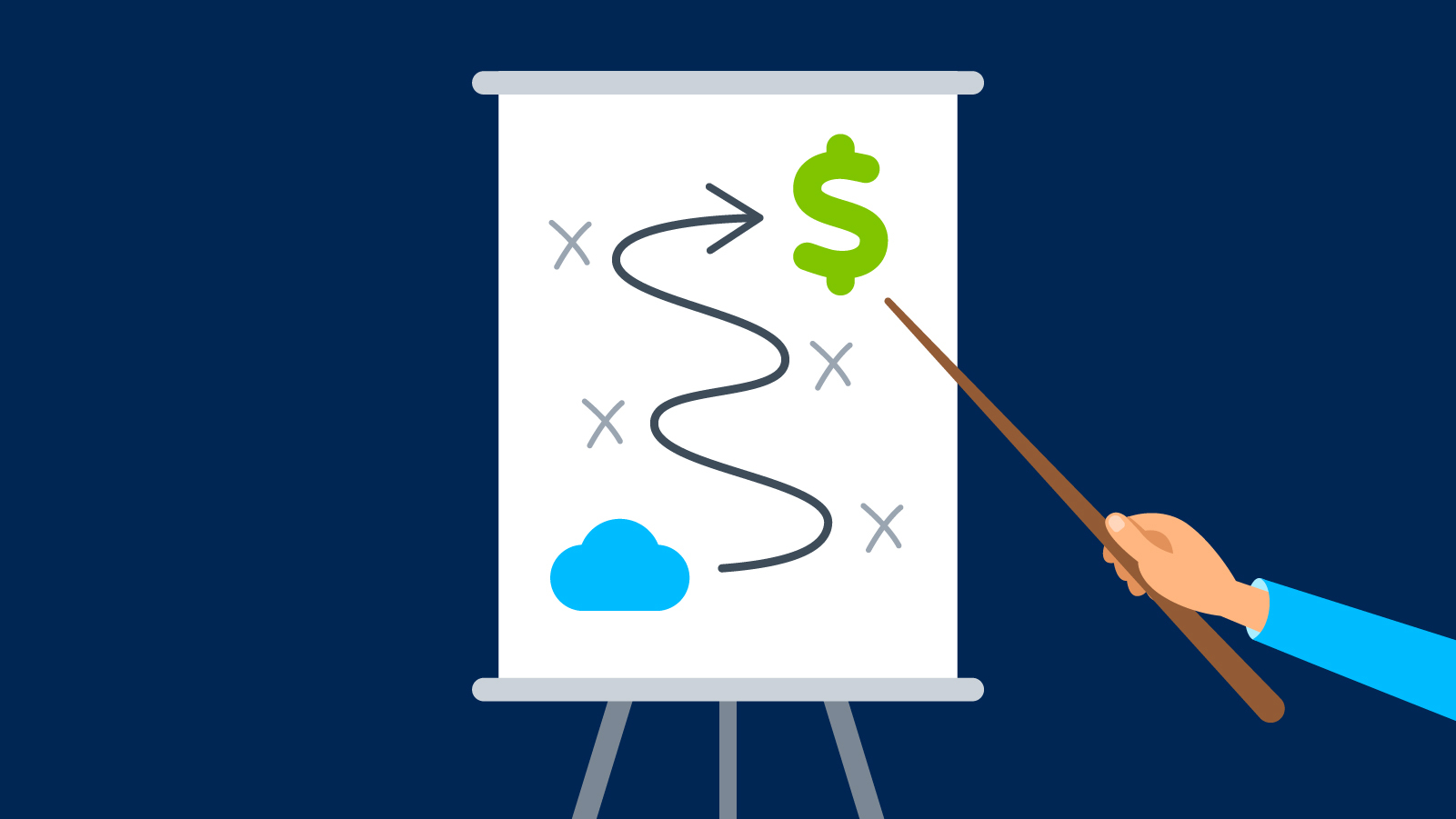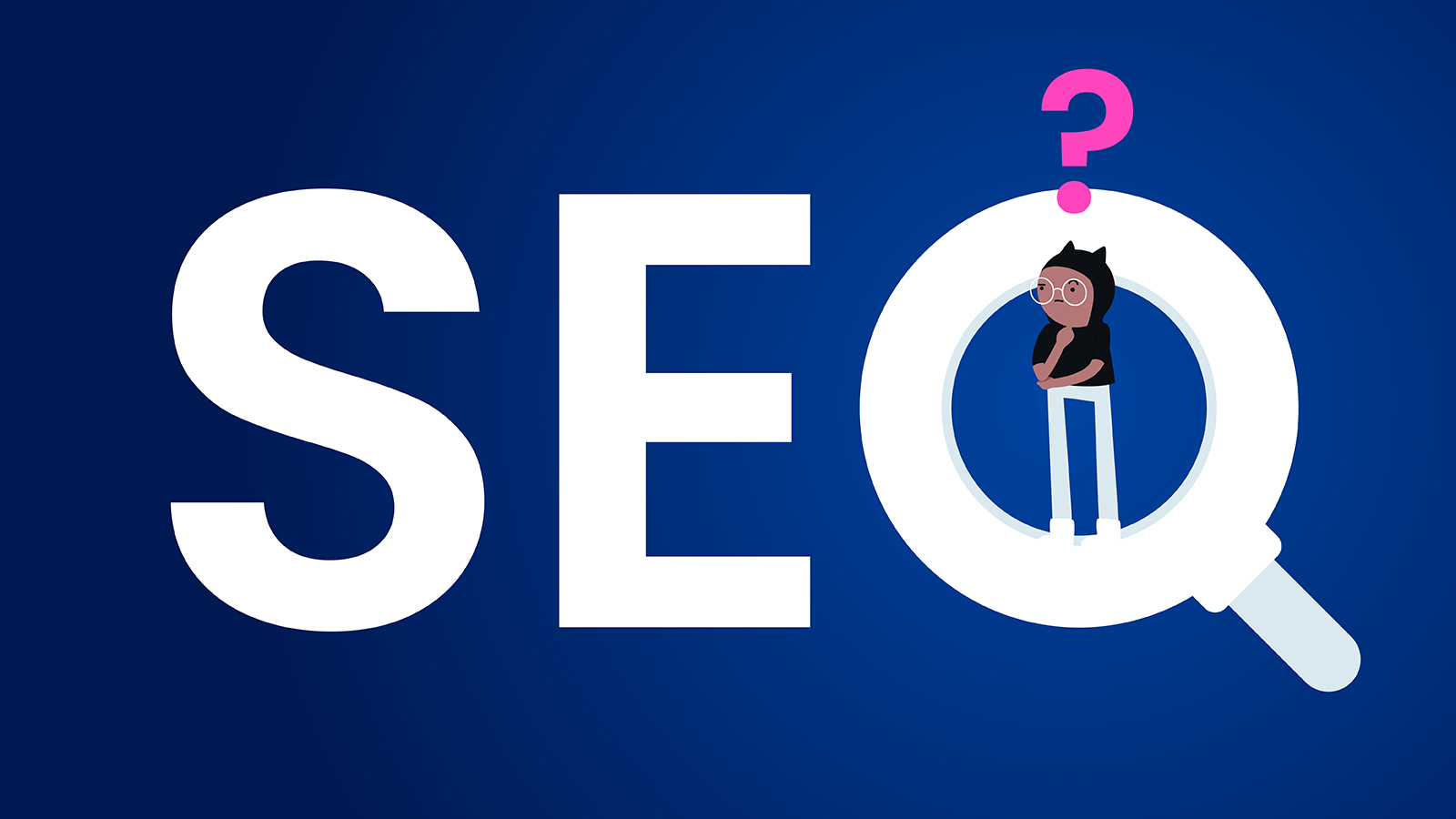|
|
Mastering the art of inbound sales can help bootstrapped software makers and SMBs increase revenue by attracting, engaging, and converting more customers — without breaking the bank.
Inbound sales focus on creating helpful, organic content to guide potential customers through the sales funnel. As a byproduct of this process, software makers and SMBs also get a chance to establish themselves as authorities in their niches and build trust and credibility for their brands.

For expert tips on creating an inbound sales strategy that attracts prospects and converts leads, we sat down with Meg Scarborough, the founder and CEO of Megawatt, where she leads a team of content and SEO experts who help B2B tech companies grow their organic traffic and revenue.
But first, a brief breakdown of some core concepts before we get into building a kick-ass inbound sales strategy for your software business.
What Are Inbound Sales?
As discussed in another post on the Freemius blog, an inbound sale occurs when a potential customer reaches out to your business, shows interest, and converts.
Inbound sales focus on appealing to prospects’ interests by providing them with resources that can help them make informed decisions. This strategy is a long-term approach that anticipates buyers’ needs from the early stages of their journey to the final purchase steps.
It’s particularly effective for businesses targeting audiences who actively use online platforms to educate themselves about specific problems or products. By offering unique, educational content with expert insights, software makers can engage and convert these informed and research-driven customers.
Why Are Inbound Sales Attractive for Bootstrapped Software Businesses?
Inbound sales are typically 60% less expensive than outbound sales, making them an excellent strategy for one-man shows and SMBs trying to encourage people to buy their software products.
They’re also more sustainable than outbound sales. Inbound sales allow you to continuously nurture new prospects who are drawn to your brand through valuable content. You can blow through your outbound list pretty fast if you’re not continuously prospecting.
Typically, inbound sales pay more dividends over time.
In the same vein, inbound sales are about more than selling your products or services. They also emphasize building long-term relationships with customers based on trust and value.
What Is an Inbound Sales Strategy?
An inbound sales strategy focuses on nurturing potential customers who were attracted to your business and product and reached out to you. Implementing a successful inbound sales approach helps to guide these customers through the buyer’s journey.
But make no mistake: nailing down an effective inbound sales strategy isn’t child’s play. You need to understand:
- Who your business is catering to
- Your audience’s pain points and priorities
- What content (and which formats) they find most helpful
- Where they hang out online and consume their content
Before you develop an inbound sales strategy, it’s important to understand the relationship between:
Inbound Sales and Inbound Marketing
Inbound sales go hand-in-hand with inbound marketing, which involves attracting potential customers through blogs, social media, SEO, and other content-driven tactics. The idea is that customers will become intrigued enough by your content and product to proactively engage with you — whether by signing up for your newsletter or sending you an email.
Your inbound marketing content should be helpful to prospective customers during different stages of the buyer’s journey:
- During the awareness stage, potential customers realize they have a problem. For example, their website’s SEO rankings might be bad.
-
During the consideration stage, they start researching solutions. Your job is to guide them down the sales funnel (more on this later).
Let’s say that you sell a WordPress plugin. Hopefully, potential customers will:
- Start engaging with your content
- Look into your product by testing out demos or free versions
Typically, this is where inbound sales start.
- At the decision stage , they weigh up different solutions and — ideally — reach out to you.
Now that there’s clarity about the relationship between inbound marketing and sales, let’s get back to the topic at hand. The first step in developing an inbound sales strategy is determining who you’re selling your product or service to.
Figure Out Buyer Personas for Software Products
Buyer personas are detailed, semi-fictional profiles of your ideal customers, created using market research, existing customer data, and some informed assumptions.
They’re essential for inbound marketing and sales because they help businesses understand customers’ needs, preferences, and behaviors.
Instead of focusing on traditional buyer personas based on interests and demographics, Meg recommends that software makers consider the professional needs of their customers.
What are their titles and what kinds of companies do they work for? What are their daily responsibilities? What challenges are they trying to solve? What are they trying to achieve?
Hone in on how your product is relevant to their work.
Your buyer personas shouldn’t be reduced to generic profiles, either — embrace the nuance (aka segmentation). Segmenting them is essential: different buyers will show interest in your product for different reasons or get involved in the sales cycle during different phases.
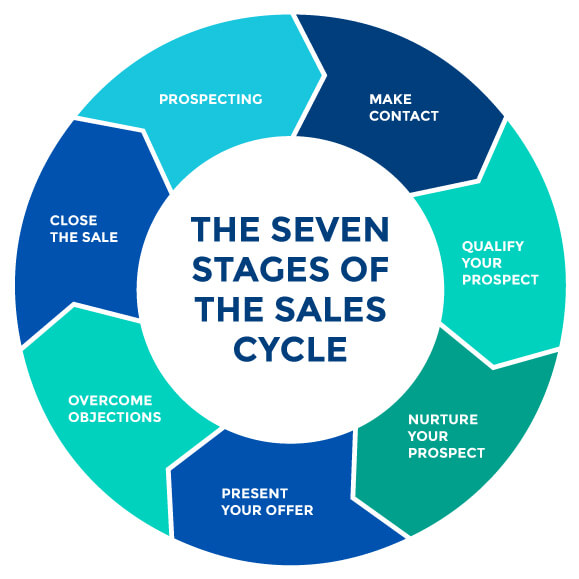
Segmenting buyer personas involves categorizing them based on specific criteria such as job titles, industries, company sizes, and their unique challenges.
Segmenting buyer personas for an SEO plugin, for example, involves identifying different groups. One segment might be digital marketing managers trying to drive sales through optimized content and keyword strategies. Another could include small business owners looking to improve local search rankings and attract foot traffic to their stores.
By using surveys, interviews, and data analytics (more on this below), you can gather insights to accurately segment your buyer personas. This ensures your content and sales strategies are tailored to address the distinct needs and priorities of each group.
Another tip for software makers: understand how technical your customers are. Should your content cover the finer details of your product or address more high-level features?
Steps to Create and Segment Buyer Personas
In combination with surveys and interviews, gather data analytics by utilizing tools such as Google Analytics, HubSpot Analytics, or specialized customer relationship management (CRM) platforms that provide detailed insights into user behavior and demographics.
You can also contact existing customers to understand what led them to your software product.
Check out job postings from companies that might require the solutions your software product offers. They show what duties an employee is expected to perform, helping you to understand how your product can empower employees and streamline tasks and operations.
You can also use audience research tools like SparkToro to determine the channels your potential customers follow on social media, what industry organizations they’re part of, which publications they read, etc.
Not only does this help you sketch your personas more specifically, but it also tells you where they hang out digitally. Marketers — for example — are super active on LinkedIn, so putting content there for them makes a lot of sense. On the other hand, developers are more active on GitHub and X/Twitter.
Segmenting different buyer personas by documenting information on a spreadsheet should be sufficient, but you can also create decks with visual representations of the personas and their information. Hubspot has different templates you can use.
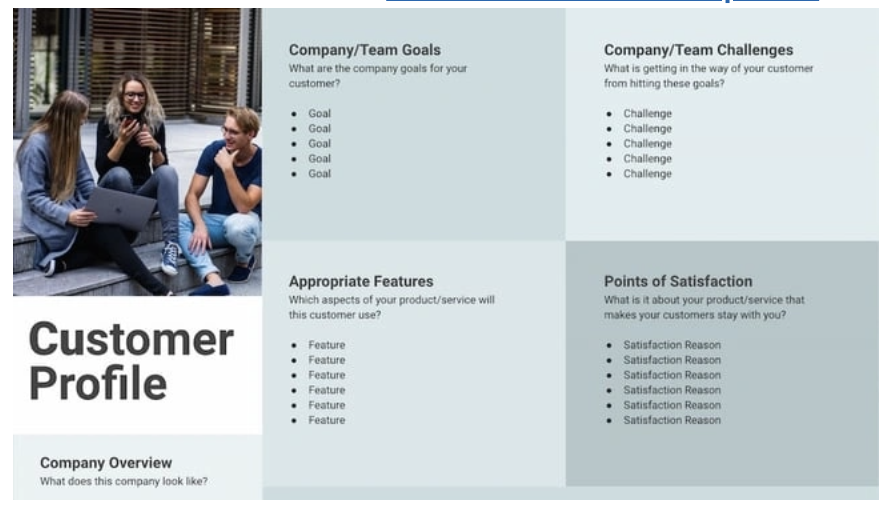
Figuring Out Your Sales Triggers
Sales triggers are events or pain points that prompt potential customers to seek solutions and information. Understanding these triggers is vital for aligning marketing and sales efforts with the customer journey.
Trigger-based marketing identifies these critical moments to respond with relevant, timely content.
Intent-based platforms that can provide data on your customers’ digital activities are effective routes. If you’re doing sales at scale and can afford them, they can be useful for understanding sales triggers.
Identifying sales triggers can also be done organically.
Events As Sales Triggers
“For Megawatt, an example would be if a new CMO starts at a company or if we find out they’ve let an agency go or are hiring in their marketing department,” Meg says. “These are good signs that they’re looking to invest in content.”
For plugin developers, certain events indicate when potential customers are likely seeking solutions. For instance, if a company announces a website redesign project, it’s a prime opportunity to showcase an SEO plugin that can optimize the new site for search engines. Similarly, the launch of a new product or service could prompt developers to pitch plugins that enhance online visibility and traffic generation efforts.
Pain Points As Sales Triggers
Pain points — “a specific problem that potential customers of your business are experiencing” — aren’t always as timely as identifying an opportunity like the above examples. However, monitoring platforms where your customers are active can help you gauge whether they’re aware of their pain points and have started to look for solutions.
Examining the history of your sales processes and outcomes can help identify common moments when customers decide to buy or implement solutions.
This is why trigger-based marketing and sales are so valuable: they reach people in the right mindset to buy and allow you to build and distribute content based on those triggers.
Once you’ve identified events and pain points as potential sales triggers, you can set objectives for your inbound sales strategy.
Setting Inbound Sales Goals
Clear and measurable goals are essential for tracking the success of inbound sales activities. Key performance indicators (KPIs) include traffic, engagement, leads, and sales.
Traffic measures the number of visitors to your website, particularly to pages where customers are ready to make purchases or engage with content before buying.
Engagement tracks how those visitors interact with your content. It’s measured by metrics such as time spent on a page, number of pages visited in a session, and new versus returning visitors. If these numbers are healthy, you’re driving the right traffic to your site. High bounce rates, on the other hand, indicate that the content may not be resonating with your audience.
Leads are potential customers who’ve expressed interest in your offerings. Measure inbound leads using a suitable CRM and track them through the sales process to understand which sales result from inbound activities. If a CRM isn’t feasible, software developers can still effectively track and manage leads through alternatives like spreadsheet templates or Hubspot’s free lead management tracking software.
These tools can help maintain organized records of leads, monitor their progress, and facilitate follow-ups to nurture them through the inbound sales process. They also promote data hygiene, which refers to keeping data clean, accurate, and up-to-date — you don’t want cold leads clogging up an otherwise healthy pipeline.
It’s important to remember that the inbound sales process is not strictly linear but follows a logical flow. With traffic and engagement, it will be easier to generate leads, and with leads, it’s easier to drive sales.
Once you’re tracking these metrics, establish a baseline over six months to a year to understand trends and set goals. From there, set quarterly targets and assess whether they are achievable, adjusting strategies as needed. Industry benchmarks can help determine if your results are within a reasonable range.
It’s a big generalization, but you want to shoot for 10-20% inbound sales growth for a quarter. You might be able to outperform that, but it’s a good place to start.
Once you’ve established buyer personas + sales triggers and goals, you need to focus on creating content that will facilitate engagement and — ultimately — conversion.
Building a Full-Funnel Content Strategy to Hit Inbound Sales KPIs
The first step is to clearly define your content goals.
Be realistic about what you can achieve given your software company’s size and budget, and plan the type and amount of content you will create over a specific period.
Consider the following:
- What topics will you cover?
- What are you trying to achieve?
- How frequently will you revisit your content plan?
Getting into the tactical details of content production and building a work stream can be helpful. The core components of a content strategy include identifying goals and KPIs and how often to track and measure them, determining specific tactics and topics, and operationalizing the entire process.
The modern-day marketing funnel can help you structure your content. It applies to any business, no matter your team’s size or your marketing budget and resources — another reason it’s beneficial for bootstrapped software businesses.
Using the Modern-Day Marketing Funnel to Create Inbound Sales Content
The traditional marketing funnel is a straightforward process: Awareness, Engagement, Desire, and Purchase.
It represents the journey potential customers take from first becoming aware of a product or service to ultimately making a purchase. It typically consists of three main stages: the top of the funnel (TOF), the middle of the funnel (MOF), and the bottom of the funnel (BOF).
The problem with this marketing funnel is that it’s over-simplified and doesn’t cut it for modern-day businesses, especially those operating in the digital space.
The more comprehensive modern-day marketing funnel, however, consists of the following steps:
- Raise Awareness
- Nurture Interest
- Spark Desire
- Facilitate Purchase
- Encourage Adoption
- Cultivate Loyalty
- Motivate Expansion
- Promote Advocacy and Affiliation
It’s effective for inbound sales because it emphasizes a continuous cycle of relationship-building with customers rather than a linear progression. This is achieved by providing ongoing education that helps potential and active customers better understand and adopt the product, making it an invaluable part of their tech stack.
Utilizing the Modern-Day Marketing Funnel to Build a Content Strategy
Creating helpful content that addresses specific problems is crucial for capturing potential customers’ attention. To develop effective content for your inbound sales strategy, you can apply the first three steps of the modern-day marketing funnel:
Raise Awareness
While figuring out buyer personas and establishing sales triggers, you identified current problems for which potential customers are seeking solutions. Your content should offer solutions without being overly promotional about your product, as potential customers are hesitant to buy from brands they don’t yet trust.
Establish your reputation as an authority in your space — seize opportunities like guest blogging, appearing on podcasts, speaking at events, and partnering with influencers.
At this stage, potential customers likely know nothing about your software product. The messaging in your content needs to show how it solves problems without overly focusing on the product itself.
Nurture Interest
Once potential customers engage with your content, entice them to return and start building relationships.
Shift your goal from being noticed to becoming a go-to source for industry-related content. Build a library of helpful content and ensure that every piece encourages potential customers to come back for more.
Success here is indicated by an increase in returning traffic, making it an excellent benchmark for monitoring your inbound sales goals. Please note that getting lots of traffic doesn’t need a big budget: Focus on quality and consistency in your content without using a sales pitch, showing customers what they can achieve with your product.
This doesn’t mean a sales pitch for your inbound strategy is a complete no-no. It just becomes more appropriate and effective once prospects start moving down the funnel 😉
Spark Desire
After building awareness and nurturing interest, create content that focuses on potential customers already aware of your brand. Content at this stage should demonstrate how your software product solves their problems. Examples include explainer videos or product demos.
This stage — traditionally the middle of the funnel — should tailor content to appeal to your ideal customer. Consult your ideal customer profiles to understand:
- What specific problems they’re facing (and how your software product can solve them)
- What content types they find most helpful
From here, you need to encourage these ideal customers — aka leads — and convert them into paying ones. It’s also critical to ensure you don’t lose them after their first purchase.
Grab a free copy of our Cheat Sheet for
Selling Plugins and Themes
A growth roadmap with concise, actionable tips for every milestone of WordPress product development.

Using the Modern-Day Marketing Funnel for the Lead Nurturing Process
After you’ve piqued potential customers’ attention with unique and helpful content, you should ask yourself: “Now what?”. Nurturing leads is critical because it moves them through the sales funnel and prevents them from stalling.
Having a process for nurturing leads is essential, especially for small teams. Having one in place increases efficiency and helps close more leads.
You can apply steps four and five of the modern-day marketing funnel to promote successful lead nurturing for your inbound sales strategy.
Facilitate Purchase
At this stage, you should focus on showing leads what they can do using your software product instead of bombarding them with info about what your software product does.
You should also remember that purchasing your product isn’t the main objective for a potential customer. Instead, it’s a milestone on their journey to achieving something bigger. For this reason, ensure that your messaging focuses on the customer’s success.
Next, unlock leads’ long-term buying potential by focusing on their needs.
Encourage Adoption
Even after a customer has purchased your software product, there’s no guarantee they’ll use it.
Customers may abandon your product due to poor UX, lack of onboarding support, or because it simply doesn’t meet the expectations created by your content.
The beauty of inbound sales is that they extend far beyond the first purchase. From here, it’s crucial to monitor customer behavior to understand how they use your product and ensure its effectiveness.
An automated follow-up like Freemius’s Deactivation Feedback Form can help you understand why customers are uninstalling your software products and what you can do to improve.
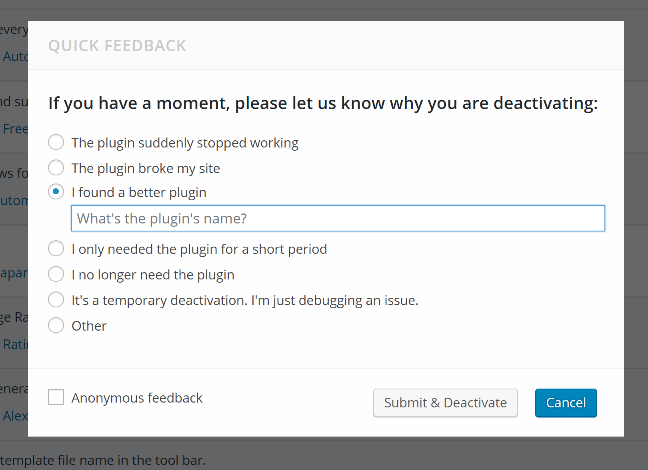
Our makers also use the Developer Dashboard to track other useful metrics like which sites are using free or premium versions of their software products, monitor checkout activity, and view customer reviews of their products.
With a well-defined lead nurturing process, you are less likely to miss out on leads who are close to converting. It also positions you to identify opportunities to optimize and automate your nurturing efforts by tracking leads consistently.
Final Thoughts on Ensuring a Lasting Inbound Sales Strategy
To recap — an effective inbound sales strategy involves:
- Researching, understanding, and creating different buyer personas
- Identifying sales triggers
- Setting measurable goals
- Creating a tailored content strategy
- Designing a robust lead nurturing process
By following these steps, software product makers and SMBs can build a comprehensive inbound sales plan that nurtures prospects and converts them into customers.
Continuous improvement and adaptation are essential, as buyer personas and sales triggers are ever-evolving. For lasting success, you should regularly review your inbound sales strategy and make adjustments to achieve the best possible results.
Incorporating an effective inbound sales strategy in the early days of Freemius played a crucial role in educating, inspiring, and attracting software creators to our platform. We still believe in and harness the power of inbound through our passion for creating value-driven content for software product makers on our social media accounts, blog, YouTube channel, and podcast plugin.fm.
If you’d like to learn more about using the same tactics that have worked for us for your business, feel free to drop us a DM on X.



